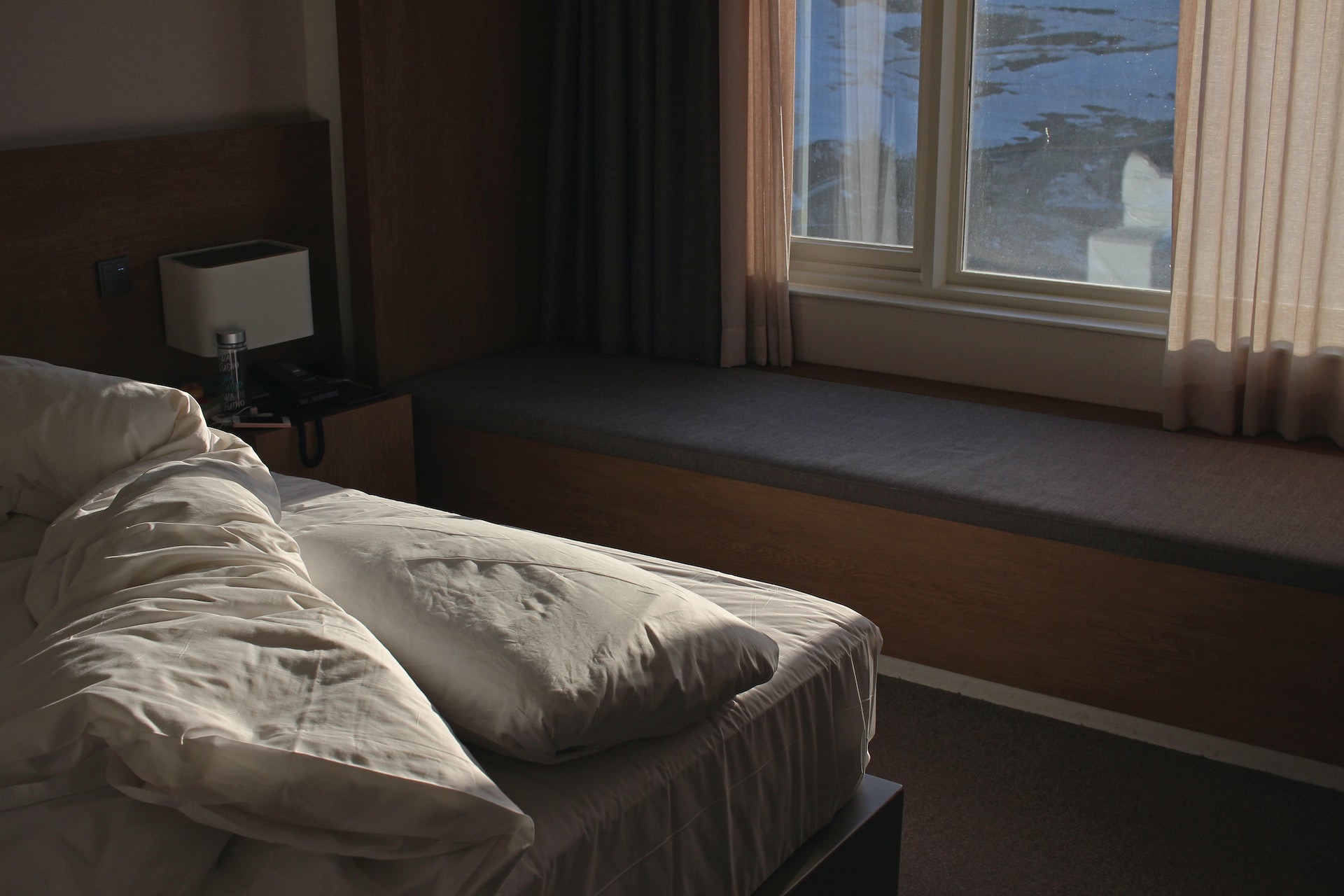Contents
- 1 Bed bug infestations can happen rapidly, so learn how to get rid of bed bugs before they become a serious problem in your home.
- 2 Do laundry, immediately.
- 3 Use a steamer.
- 4 Heat your home up.
- 5 Vacuum your beds and furniture.
- 6 Get rid of clutter.
- 7 Check your electronics.
- 8 Encase your mattress.
- 9 Seal off any entryways.
- 10 Bed bug infestations are hard to prevent and difficult to remove, but its best to act fast before things get even worse.
- 11 Conclusion
Bed bug infestations can be a nuisance, but theyre also highly contagious. Thats why its important to know how to get rid of bed bugs and prevent them from returning in the future.
Bed bug infestations can happen rapidly, so learn how to get rid of bed bugs before they become a serious problem in your home.
Bed bugs can be a problem in many countries, but theyre most common in developed countries where there are more people and the right conditions for bed bugs to thrive.
Bed bugs are not a sign of uncleanliness. They dont care if your house is dirty or clean, so you dont need to worry about cleaning obsessively or hiring someone to clean your home.
There are several ways you can get rid of bed bugs once they have infested your home:
Do laundry, immediately.
You should wash all your clothes, bedding and linens in hot water. This will kill the bugs on them and remove any insects eggs that may be present. If you cant wash the items right away, seal them in plastic bags and put them in the freezer for two weeks to kill any bugs or their eggs (the freezing temperature kills bed bugs).
Once youve washed everything, dry it on a high heat setting as well. Bedbugs dont like extreme temperatures so this will also help you get rid of them.
Use a steamer.
You can also use a steam cleaner to kill bed bugs. Before you start, make sure that you have an allergen-safe vacuum to clean up the dead bugs after killing them with the steamer. First, fill the chamber of your steamer with water just below where it begins to heat up and turn it on high heat for about 10 minutes. Then turn off the unit, let it cool down for five minutes before opening its door and carefully moving into a room where you think there could be bedbugs hiding (like under furniture or carpets). Once youve found an area that looks good for bedbug extermination, turn the machine back on full blast so that its nozzle is pointed at whatever surface needs attention – preferably not your body! When using this method alone without any chemical agents mixed in with the hot steamy air being blown around by your handheld device, theres no guarantee 100% success rate when eradicating these pests from their hiding places; however if used properly as described above then most infestations should quickly die out within just one thorough cleaning session!
Heat your home up.
To kill bed bugs, youll need to heat your room up to at least 122 degrees Fahrenheit for at least one hour.
The easiest way to do this is with a heat gun or hair dryer. You can also kill bed bugs by putting the item you want to heat in a plastic bag and then heating it for about 20 minutes on the highest setting with an iron. But dont use microwaves—they arent hot enough and wont work as well as other methods of heating items. Bedbugs are incredibly sensitive to heat; theyll die at temperatures below 122 degrees, but if youre trying to eradicate an infestation quickly and efficiently, using something hotter than that will only improve your chances of success!
If your bedroom has carpeting or wooden floors that arent covered in sheets or rugs (which would provide extra insulation), consider purchasing an electric space heater instead of going through all the trouble of moving furniture around again just yet: some sources report that these kinds of heaters can get even hotter than regular irons—and since most people want their bedrooms cooler rather than warmer anyways (because lets face it: those blankets make things nice and cozy), having one nearby could come in handy later on without them needing much effort invested into moving everything over again right now
Vacuum your beds and furniture.
Vacuuming is a great way to remove bed bugs. Vacuum your beds and furniture at least twice a week, especially around the seams and crevices of mattresses, box springs, headboards, and nightstands. Also vacuum under the bed and under all pieces of furniture in the room. Dont forget to clean behind wall-mounted picture frames and any other objects on the floor or walls (like picture frames) that may be near where you sleep.
If you have a hand-held vacuum cleaner with an upholstery brush attachment for cleaning fabric furniture or upholstered chairs:
- Use the brush attachment to vacuum all surfaces including seams, tufts and edges around buttons on mattresses and box springs as well as other hard-to-reach areas;
- Strip off all sheets/blankets from beds before vacuuming;
- For best results use a HEPA filter bagless vacuum cleaner with at least 2 amps of suction power
Get rid of clutter.
- Get rid of clutter. Dirt and clutter are the perfect hiding places for bed bugs, so get rid of anything that isn’t essential to your survival. If you can’t bear to part with something, store it away in a plastic bag and seal it tightly until you do need it again.
- Dont let bed bugs hide in clutter. Once youve cleared out any clutter, make sure it stays that way by keeping up with regular cleaning chores such as vacuuming or sweeping floors regularly to prevent infestations from returning once theyve been removed through other methods (like using chemicals).
Check your electronics.
- Check your electronics. Bed bugs love to hide in electronics and other small, dark places. If they find their way into your electronics, it’s likely that they won’t leave without a fight. Use a flashlight to inspect all sides of the devices, especially the battery compartment and any crevices or cracks in the casing. If you spot any signs of bed bugs (discoloration from eggs or fecal matter), remove devices from rooms that are infested with them and clean them thoroughly with soap and water. Vacuum all components thoroughly before washing too—this will help remove any hidden eggs or larvae.
- Use an insecticide spray on bed bug-infested area(s). Insecticides containing pyrethrins are effective against bed bugs because they disrupt the nervous system of these insects by affecting their neurotransmitters; however, these chemicals aren’t safe around pets or children so its best not to use them unless absolutely necessary (and even then only as directed by instructions on packaging). You should also avoid using DEET-based repellents around your pet if possible; instead opt for pet-safe options such as lemon eucalyptus oil mixed with water (see [link]BED BUGS: How To Get Rid Of Them Forever!|https://www.titleproloanservicesincorpcom/howtogetridofbedbugsforever/indexhtml
Encase your mattress.
The first step to take is to purchase a zippered mattress cover.
- Check that the zipper is intact and in working order (if it isn’t, you may need to replace the cover).
- Remove any bedding from your bed and place it in an area where it can be stored or washed later.
Now we are ready for the actual encasing process:
- Place the mattress inside of its new encasement by folding over one end, then pulling up and tucking into place along all four sides until it stays put on its own accord.
- Zip up this side first, then repeat with each remaining corner until no part of your mattress is exposed. Check for any rips or tears in your new covering before closing off any possible gaps. If you notice any flaws, patch them up with duct tape immediately (you can also buy patches specifically designed for this purpose). If there are no problems with your new enclosure system yet but there were previously issues with dust mites or mold growth under sheets or blankets that caused allergic reactions like sneezing fits during sleep hours when these were removed from beds due to being dirty/unhygienic environments at times due to constant use over long periods when nobody changes their linens enough often enough because sometimes not everyone has time on their hands either way so maybe consider taking care about this issue as well before tackling bugs head-on?
Seal off any entryways.
Once youve inspected your bed, walls and floors for bed bug signs, the next step is to seal off any entryways. This can be done by sealing cracks and crevices in the walls, floors, baseboards and window frames. You should also seal door frames and any other openings in the home where a bed bug might gain access. If you cant seal these openings permanently because of their location or size or if its not possible to do so (for example if theres a wall that divides two rooms), then spray with an insecticide product designed specifically for controlling bed bugs such as Temprid SC .
Bed bug infestations are hard to prevent and difficult to remove, but its best to act fast before things get even worse.
Bed bug infestations are hard to prevent and difficult to remove, but its best to act fast before things get even worse. These tiny insects can be difficult to detect, so if you suspect that you have bedbugs in your home, opt for a professional exterminator right away. If you live in an apartment building with multiple units, make sure that all of your neighbors apartments are inspected as well—that way everyone will know which unit they came from and take care of those bugs quickly so they dont spread.
If possible avoid bringing used furniture into your home; if this is unavoidable then inspect the furniture closely before bringing it inside. Bedbugs are not too picky about where they live: theyll settle on couches or mattresses just as easily as they will behind furniture or wall cracks.
Conclusion
There are many steps that you can take to prevent a bed bug infestation from happening. Its important to stay vigilant and check your surroundings regularly. If you start noticing signs of an infestation, act fast! Try these methods to get rid of bed bugs today.

